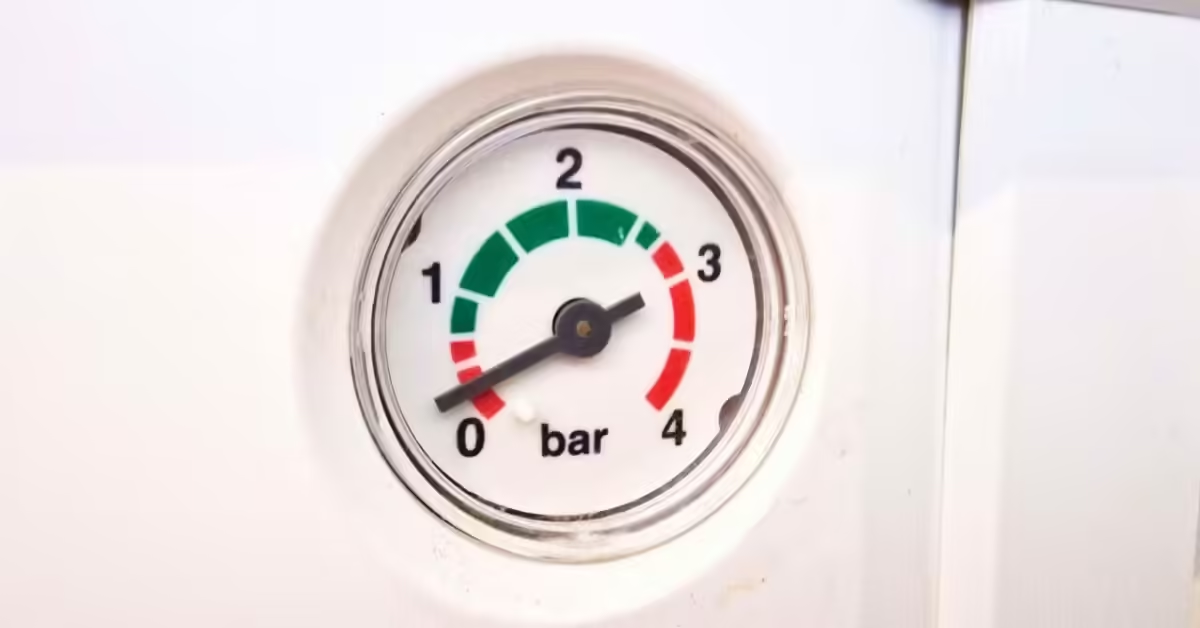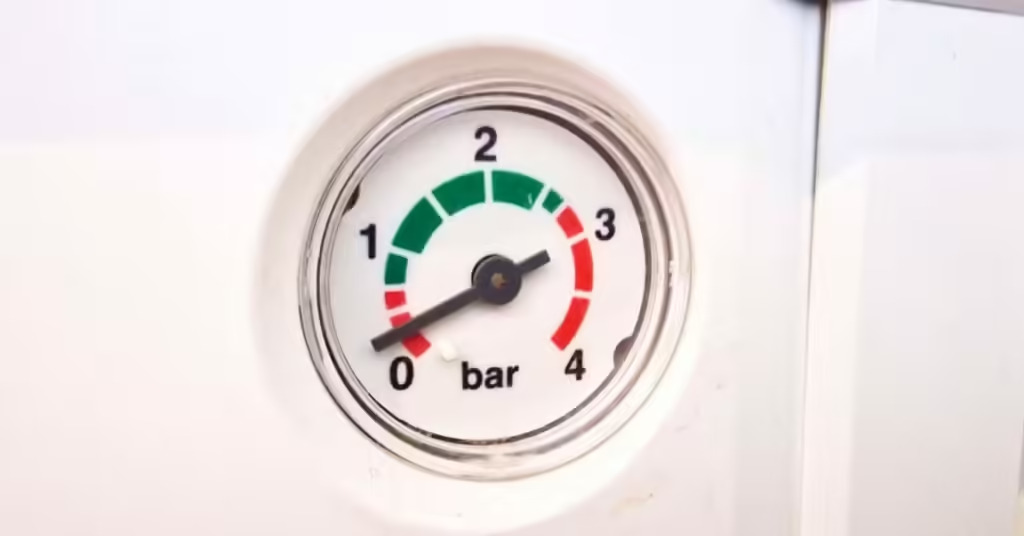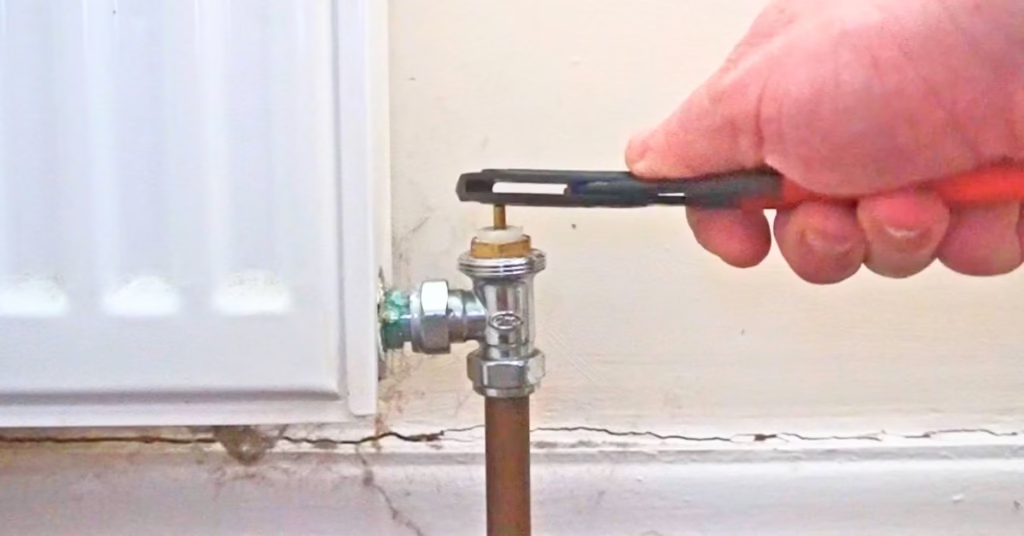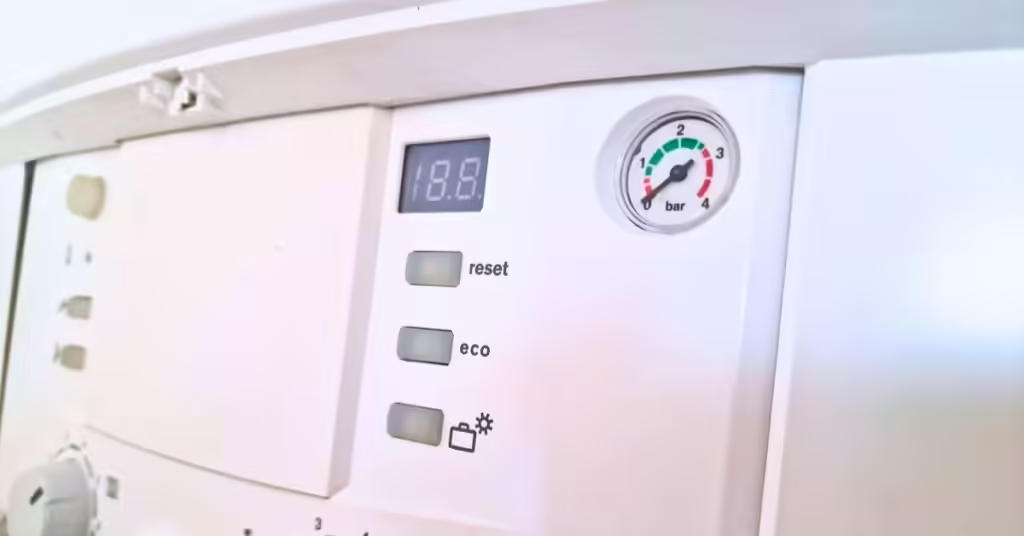Last updated on March 2nd, 2025
If your boiler pressure is too low, it can cause the system to shut down, leaving you without heating or hot water. To repressurise a boiler, you’ll need to add water to the heating system using the filling loop. With over a decade of experience repairing boilers and heating systems, I’ve resolved countless boiler pressure issues.
Repressurising a boiler
The pressure on a boiler should be between 1 and 1.5 bar when the heating is off and the radiators are cold. It rises when the heating is on so you will not get the proper reading until it has cooled down. If your boiler pressure drops below 1 bar you should increase it using the filling loop.
A filling loop is built-in on the bottom of modern combi boilers, but it could also be on the pipework. Usually below the boiler or in the hot water cylinder cupboard if you have one, but an external flexible filling loop could be anywhere on the system.
Video guide
Step-by-step guide
How to increase the pressure:
- Open one filling loop valve fully (if there are two valves)
- Open the other valve slowly until you can hear the water
- When the pressure has reached 1 to 1.5 bar close both valves
- Reset the boiler (if needed)
- Turn the heating on
Do not open both filling loop valves fully immediately as the house’s water pressure might be too much for the boiler and cause the pressure to shoot up too high.

Boiler keeps losing pressure
A boiler that keeps losing pressure means there’s a problem that needs to be fixed.
Most common reasons:
- A Leak on the central heating system
- The expansion vessel has lost its air
- Pressure relief valve passing water
- Filling loop open
You should check if the pressure is rising to 3 bar when the heating is on to narrow down the problem. If the pressure is dropping to zero without rising too high first, you most likely have a leak somewhere on the system.
Summary
If your boiler pressure is too low or too high, fixing it is important. Repressurising a boiler is an easy job. It can save you from paying a plumber to do an easy task.
If you have to keep repressurising your boiler, you should get that problem found and fixed as soon as possible.
Have any questions? Drop them in the comments below, I’ll do my best to help! If you found this post helpful, don’t forget to share it with others who might benefit.
FAQs
Do I need to turn my boiler off to repressurise?
No, you do need to turn your boiler off to repressurise it. It is recommended to repressurise when the heating is off and the system is cold as the pressure rises when the heating is on, but I repressurise boilers all the time when the heating is on.
Why won’t my boiler pressure go up?
If your boiler pressure won’t go up it could be because the filling loop is broken or blocked, or the house mains water pressure could be too low or off – If the house’s water pressure is only 0.5 bar then the boiler pressure can not be raised above 0.5 bar.
How often should you need to repressurise?
A system with a pressure gauge is a sealed pressurised system so you shouldn’t need to repressurise it at all. If the pressure drops, the water is getting out which should not be happening. If you need to repressurise your boiler once or twice a year I wouldn’t worry about it as it’s such a small leak that it’s barely noticeable.





Hi Steven,
Thanks for the blog and it is very helpful. I have few queries.
1. When I tried to repressurise my ideal combi , it is not going up after 1.25 bar even if the filling loop kept open. Why so?
2. Few times pressure went down and got F1 code when we tried to turn on shower/tap but when central heating turned on it started working normally without repressurising. Why?
3. When boiler is on and off (when cooling down) I could hear some tuk , tuk sound every 10 seconds, it gradually increases the time in-between time then goes away. Any idea why the above are happening.
Thanks in advance
Hi Prijin, if the pressure gauge isn’t moving with the filling loop open it could be for a few different reasons:
1. Blocked/faulty filling loop
2. The properties water pressure is 1.25 bar which means you can’t get the boiler pressure to go higher than that
3. Blocked/faulty pressure gauge/sensor
These are the 3 most likely reasons. The hot water causing the boiler pressure to drop when it’s running sounds like it could be a sludgy heating system causing problems with the pressure gauge or sensor.
Thanks Steven for the response.
1. When my boiler shows F1, and when we turn on shower cold water is coming but when we turn on heater then F1 is changed and pressure going up and gradually will get the hot water.
2. Also if I set the boiler pressure to 1.3, would that be same when the boiler is off? Or do we expect it to go down a bit?
The pressure loop on my oil combi boiler isnt pressurising the system. Any ideas and can i pressurise the bladder myself. Thanks Gav
how do i bring the pressure up to number 1 please